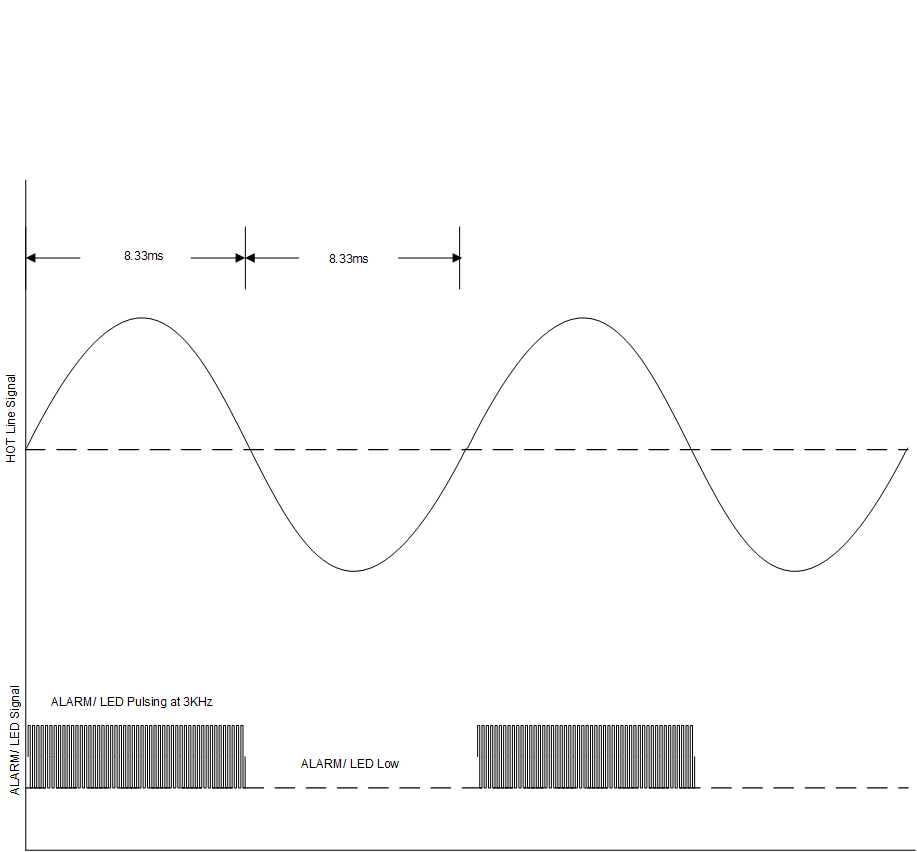SBFS042 June 2020 AFE3010
PRODUCTION DATA.
- 1 Features
- 2 Applications
- 3 Description
- 4 Revision History
- 5 Pin Configuration and Functions
- 6 Specifications
- 7 Detailed Description
- 8 Application and Implementation
- 9 Power Supply Recommendations
- 10Layout
- 11Device and Documentation Support
- 12Mechanical, Packaging, and Orderable Information
Package Options
Mechanical Data (Package|Pins)
- RGT|16
Thermal pad, mechanical data (Package|Pins)
- RGT|16
Orderable Information
7.3.4 ALARM (LED) Driver
The AFE3010 ALARM pin can be used to drive an LED or a buzzer. Under normal system operation the ALARM output remains low. During active operation, the ALARM signal generates a 3-KHz signal for the duration of positive half of the power cycle and remains low for the duration of the negative half power cycle. Figure 9 shows the ALARM signal scheme over a 60-Hz power line.
 Figure 9. AFE3010 ALARM Signal Active Mode Definition (Time Calculation Shown for a 60-Hz Power Line)
Figure 9. AFE3010 ALARM Signal Active Mode Definition (Time Calculation Shown for a 60-Hz Power Line)